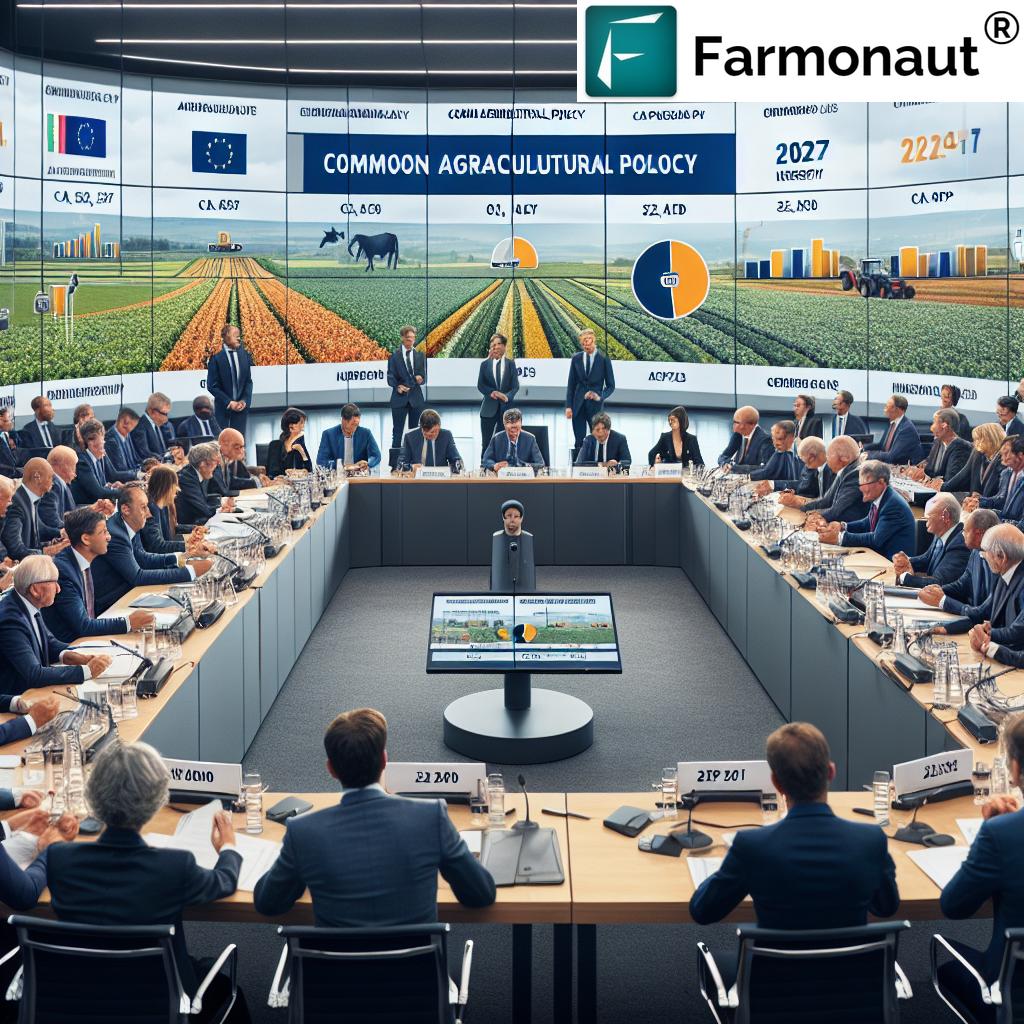Urgent: Russia’s 65,000 Tractor Deficit Threatens Agricultural Revolution – Can Modernization Save the Day?

In a startling revelation, the Russian Agriculture Ministry has unveiled a critical Russian agriculture equipment shortage that threatens to derail the nation’s ambitious agricultural goals. The deficit, particularly in tractors and combine harvesters, paints a concerning picture for the future of Russian farming and food production.
The Scale of the Problem: Tractor Deficit in Russia
According to recent data, the tractor shortage Russia is facing has reached an alarming 65,000 units. This tractor deficit in Russia is not just a number; it represents a significant gap in the country’s agricultural capabilities. To put this into perspective, the ideal fleet for timely fieldwork completion should include 494,300 tractors. However, as of August 1, 2024, agricultural producers only had access to 429,500 tractors.
The situation with combine harvesters is equally concerning. The combine harvester shortage stands at 34,000 units, with farmers having access to only 127,100 grain harvesters and 15,100 forage harvesters, far below the required 176,500 units.
Aging Equipment: A Looming Crisis
The Russian agriculture deficit is further exacerbated by the age of the existing equipment. The ministry reports that:
- 53% of tractors have been in service for over ten years
- 45% of grain harvesters are beyond their prime
- 44% of forage harvesters are outdated
This aging fleet not only reduces efficiency but also increases the risk of breakdowns during critical harvest periods, potentially leading to significant crop losses.
The Path Forward: Agricultural Machinery Renewal Russia
To address this crisis, the ministry emphasizes the need for agricultural equipment renewal. The goal is ambitious but necessary: an annual renewal rate of 10% for self-propelled vehicles and other types of equipment. This agricultural machinery renewal Russia initiative is crucial to maintaining productivity and ensuring food security.
Explore how Farmonaut’s satellite-based solutions can assist in efficient farm management: 
Beyond Crop Production: Russian Livestock Farming Challenges
The equipment crisis extends beyond crop production, affecting livestock farming as well. The ministry highlights several Russian livestock farming challenges:
- Severe environmental effects on equipment, necessitating frequent replacements
- High dependence on imported equipment, with imports accounting for:
- 50% of air-conditioning and ventilation equipment
- 50% of software and control systems
- 25% of machine tool equipment
- 30% of equipment for feed mills
- High wear and tear on facilities housing livestock and poultry
These livestock equipment imports create a vulnerability in the supply chain, especially in times of geopolitical tensions or global supply disruptions.
Dairy and Poultry Sectors: A Call for Urgent Modernization
The need for dairy farm modernization and improvements in poultry farm infrastructure is critical. The ministry’s findings are alarming:
- Around half of the country’s milk is produced on dairy farms with over 60% wear and tear
- 40% of eggs are produced at poultry farms with wear levels between 40% and 60%
- 30% of eggs come from farms with wear levels exceeding 60%
These statistics underscore the urgent need for investment in modernizing these crucial sectors of Russian agriculture.

Food Industry Modernization Russia: A Key to Future Success
The challenges extend to the food processing sector as well. The ministry reports that the depreciation of fixed assets in the food industry increased from 46.7% to 51.6% between 2017 and 2020. For machinery and equipment specifically, this figure rose from 58.3% to 62.3%.
To address this, a comprehensive food industry modernization Russia plan is needed. This includes:
- Construction of new facilities with advanced technologies
- Upgrading existing plants to meet international standards
- Investing in research and development for food processing innovations
These steps are crucial not only for domestic food security but also for boosting Russian agro-industrial exports.
Ambitious Goals: Modernizing Russian Farming Sector
Russian President Vladimir Putin has set ambitious targets for the agricultural sector:
- Increase production by 25% by 2030 compared to 2021 levels
- Boost exports 1.5-fold in the same period
Achieving these goals will require a concerted effort in modernizing Russian farming sector. This includes not only addressing the equipment deficit but also embracing innovative technologies and sustainable farming practices.
Access real-time satellite data for precision agriculture with Farmonaut’s API: Farmonaut Satellite API
The Road Ahead: Agro-industrial Complex Development Russia
The path to overcoming these challenges and achieving the set goals involves a multi-faceted approach to agro-industrial complex development Russia:
- Investment in Domestic Manufacturing: Reducing dependence on imports by developing local production of agricultural machinery and equipment.
- Technology Adoption: Embracing precision agriculture, IoT, and AI to optimize farm operations and resource use.
- Skill Development: Training farmers and agricultural workers in modern farming techniques and equipment operation.
- Research and Innovation: Investing in agricultural research to develop crops and livestock breeds suited to Russian conditions.
- Infrastructure Development: Improving rural infrastructure, including storage facilities and transportation networks.
The success of these initiatives will be crucial for ensuring food security, boosting exports, and strengthening Russia’s position in the global agricultural market.
Conclusion: A Pivotal Moment for Russian Agriculture
The Russian agriculture equipment shortage presents both a challenge and an opportunity. While the current situation is concerning, it also provides a catalyst for much-needed modernization and innovation in the sector. The coming years will be critical in determining whether Russia can overcome these hurdles and achieve its ambitious agricultural goals.
As the country embarks on this journey of Russian farming modernization, the role of technology and data-driven decision-making will be more important than ever. Tools and platforms that provide insights into crop health, weather patterns, and optimal resource utilization will be invaluable in this transformation.
Enhance your farming operations with Farmonaut’s mobile apps:


The challenges facing Russian agriculture are significant, but with the right strategies and investments, they are not insurmountable. The modernization of the Russian farming sector is not just about overcoming deficits; it’s about laying the foundation for a more productive, sustainable, and globally competitive agricultural industry.
For developers interested in integrating agricultural data into their applications, check out the Farmonaut API Developer Docs.













